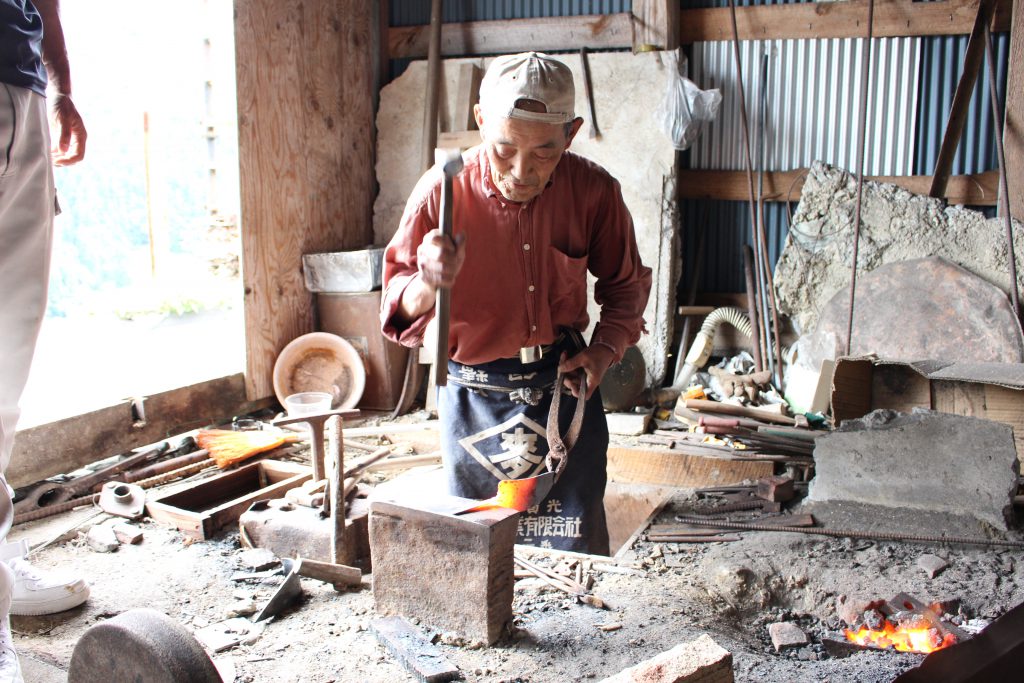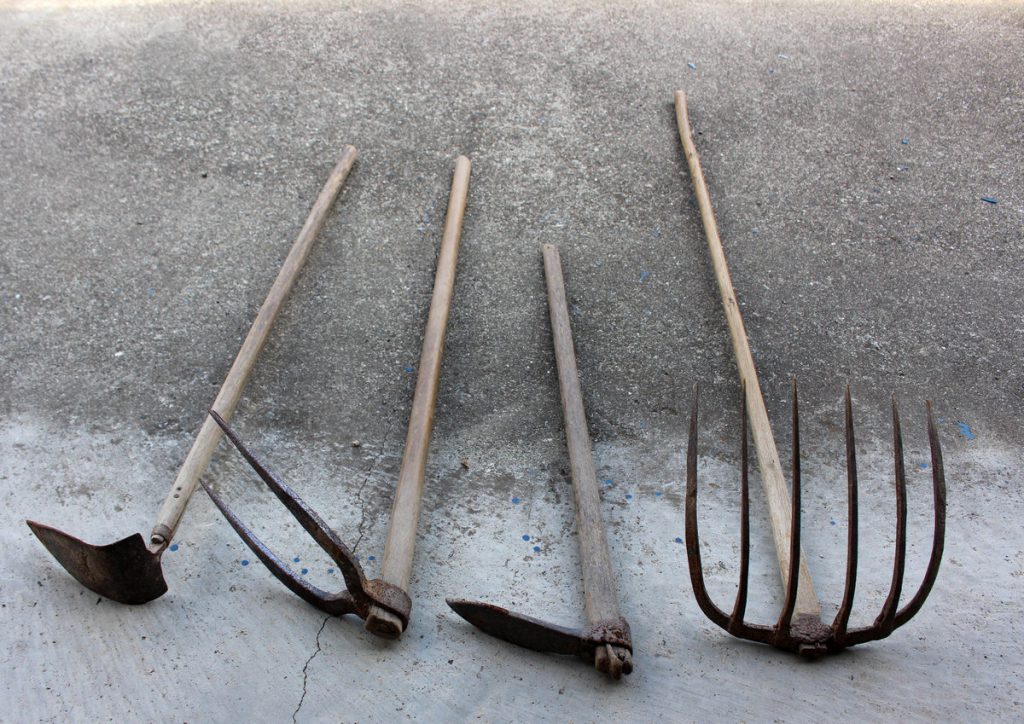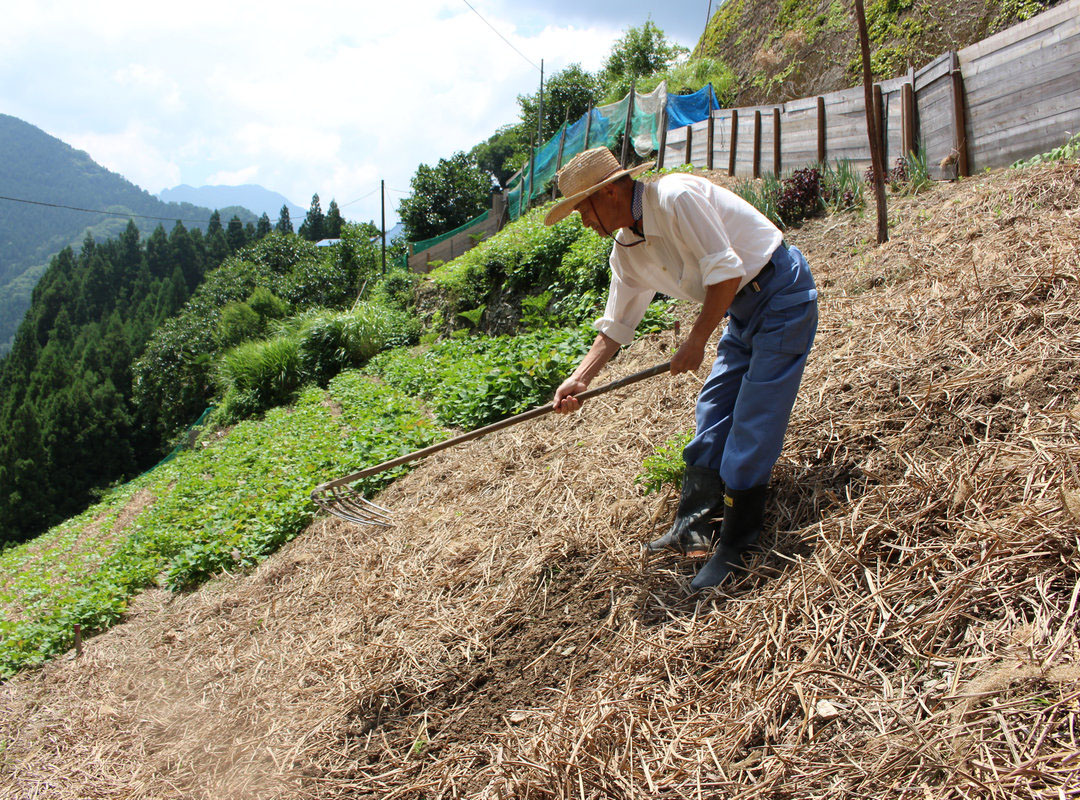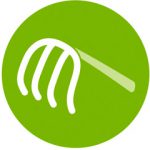 To protect traditions and nature
To protect traditions and nature
The techniques to improve the soil environment are wisdom for helping agriculture in mountainous regions worldwide.
Koeguro
One of the unique characteristics of the Nishi-Awa Steep Slope Land Agriculture System is Koeguro, which is kaya straw collected and piled up in a cone shape to dry. The hay is then cut into small pieces and laid over the soil surface, fertilizing the soil and preventing erosion. It also prevents the growth of weeds, eases the heat in summer and the cold in winter, and prevents the soil from drying.
The word Kaya collectively refers to plants such as pampas, grass, and cogon grass. There used to be Kaya-ba (grasslands) in farm villages, and hay was used as feed for the livestock (Hago), as fertilizer for the fields (Koe), and as material for thatched roofs. In Nishi-Awa, Kaya-ba is still utilized for farming today.
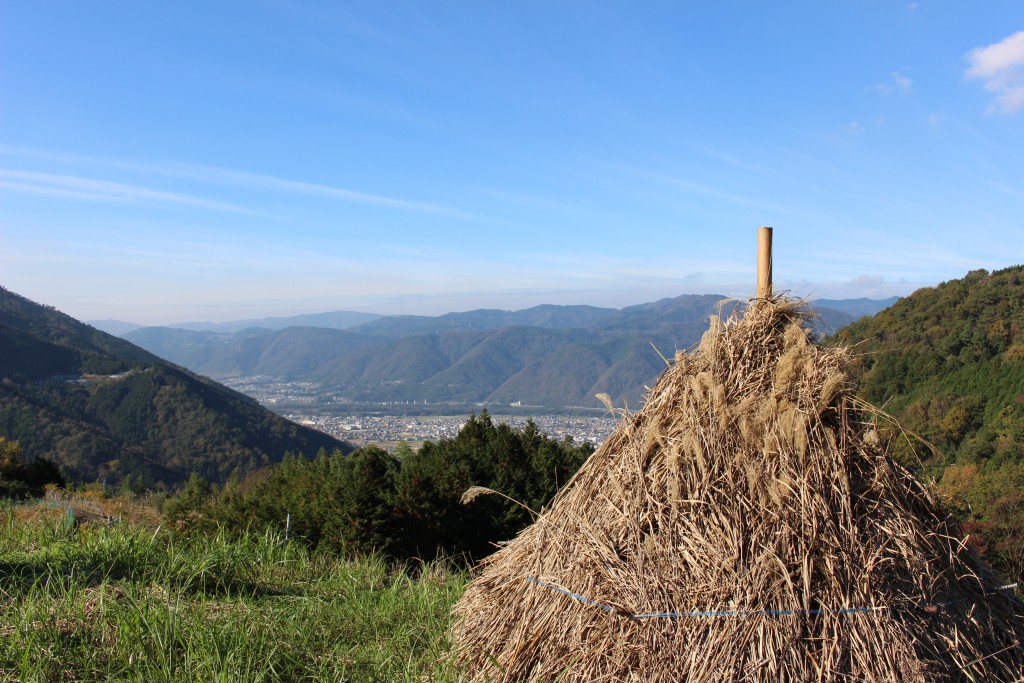
Indigenous farming tools manufactured by blacksmiths
Farming on slopes requires special skills: cutting dried kaya into small pieces and laying them over the fields to prevent soil erosion. If the soil flows downward, it must be returned upward using a traditional tool called Sarae. Another special tool to crush gravel called Tsubute found a lot in the fields to make soil. These tools are not commercially available. The blacksmiths, called Kajiya in the villages, have been manufacturing tools designed following the inclination of the sloping field.
